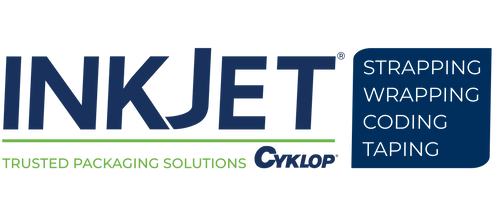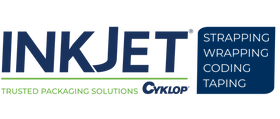Printing on Tin: Top Solutions
|
|
|||
|
|
|
||
In these fields and others, tin products and packaging must be outfitted with traceable codes and markings to:
- Comply with regulations
- Honor distribution network policies
- Prepare for potential product recalls
- Aid quality assurance processes
Thankfully, printing on tin isn’t difficult with the proper hardware. Below, we take a look at today’s best tin-marking solutions, examine their strengths, and explain which solution may be right for you:
The Best Technologies for Printing on Tin
This chart lists today’s most popular tin marking technologies and compares their key attributes and abilities. Although laser isn’t technically a “printing” solution, laser marking systems excel at industrial tin coding applications and are prized by high-volume operations and metal shops.
To learn more about each option, click the jump links in the leftmost column or scroll past the chart for more information.
|
|
|||||
|
|
|
|
|
|
|
|
|
|
|
|
|
|
|
|
|
|
|
|
|
|
|
|
|
|
|
|
Continuous Inkjet Printers
Continuous inkjet (CIJ) printers like the DuraCode Touchscreen are non-contact printing systems that excel at high-speed applications. Built for production line marking, CIJ printers can mark tin substrates moving at speeds above 300 m/min. Thanks to their piezoelectric printheads, large fluid cartridges, and powerful ink circulation systems, CIJ printers can:
- Operate up to 24 hours a day without any interruptions
- Place consistently legible codes on thousands of products a day
- Successfully mark flat and curved surfaces
Many CIJ printers are built with fortified outer structures to prevent interruptions, damages, and misprints from water or dust ingress. For instance, InkJet, Inc’s DuraCode printers have IP55-rated structures that:
- Prevent damages and coding failure due to dust ingress
- Protect the unit from water ingress at all angles. Slight water ingress may occur, but there won’t be any harmful or disruptive effects
CIJ printers are also compatible with numerous inks and specialty formulas. These diverse ink options help companies complete applications which require certain dry times or other specific properties. InkJet, Inc’s CIJ ink offerings include formulas that are:
- Thermochromic
- Environmentally friendly
- Hard-pigmented
- Soft-pigmented
- Oil-penetrating
- Retort-resistant
- Heat-resistant
- Solvent-resistant
- Alcohol-resistant
- Sunlight-resistant
These qualities make CIJ printers an excellent choice for industrial tin printing applications. However, code quality and size are relatively limited compared to other marking solutions. Most CIJ printers create markings around 15 mm high with a max resolution of around 45 DPI. TIJ printers and laser marking systems can create larger, higher-contrast markings.
|
|
|
|
|
|
Thermal Inkjet Printers
Thermal inkjet (TIJ) printers are smaller, lighter, and more affordable than CIJ printers. TIJ units like the Anser U2 Pro-S and Anser X1 weigh around 5-10 pounds, making them easy to install and reposition along production lines.
Most TIJ models are slower than CIJ printers but can create higher-quality codes. For example, the Anser U2 Pro-S can create codes up to 400 x 600 DPI but maxes out at 60.96 m/min at 300 DPI. Many TIJ units can also print codes up to 1” high—a larger size than most CIJs can match.
High-end TIJs like the Anser X1 not only create larger, higher-quality codes than CIJ printers, they offer similar printing speeds as well. The Anser X1 enables users to:
- Create 600 x 600 DPI markings
- Print codes, images, and other markings up to 1” high (2” high with stitched printheads)
- Mark substrates moving at 300 m/min.
Moreover, the Anser X1 is built with an IP-66 outer structure that provides substantial protection against dust and water ingress.
TIJ printers' low upfront cost and versatility make them ideal for smaller operations and production lines that do not require the high speeds of CIJ and laser marking systems. They also have minimal maintenance needs, lowering the overall ownership cost.
However, TIJ ink does cost more than CIJ ink, so you should carefully evaluate your marking needs before investing in either system.
|
|
|
|
|
|
Fiber Laser Marking Machines
Fiber laser marking machines like InkJet, Inc’s F8100F system deliver fast printing speeds, pinpoint accuracy, and consistently excellent results. Like continuous inkjet printers, they can run 24 hours a day without interruption and are compatible with flat and curved surfaces. Like thermal inkjet printers, they offer large print windows, high-contrast capabilities, and minimal maintenance requirements.
Users that install the F8100F on their production lines benefit from:
- Coding speeds up to 2,000 characters/second (when using a high-speed scanner)
- An air-cooled laser source for 24/7 uninterrupted coding
- A small spot size that is ideal for complex coding applications
- Multiple high-resolution print field lens options for high-contrast coding
- IP54-grade protection against dust and liquid ingress
Fiber laser marking systems can also complete stationary marking tasks. While CIJ and TIJ printers can only code moving substrates, laser systems can mark and engrave stationary objects. This function benefits part producers and metal shops that don’t have coding lines or need to place intricate markings and large images on their goods.
Fiber laser systems are more expensive than CIJ printers upfront but do not require ink or solvent to mark materials. The only consumable costs associated with laser systems are periodic filter changes. If you have high-volume coding needs, a fiber laser system could be more affordable than a CIJ printer over time.
Unlike inkjet printers, however, laser systems have certain safety concerns. Laser users must outfit their lines with beam shields, fume extractors, and fortified brackets to keep workers safe and healthy. These precautions are necessary and worth the investment if you require the speed, power, and versatility of laser systems
|
|
|
|
|
|
Want More Help Printing on Tin? Contact InkJet, Inc. Today
Tin is an essential manufacturing and packaging material for companies of diverse sectors and specialties. Industries such as automotive manufacturing, electronic production, and food packaging rely on tin to create and package products for retail sale.
Companies must outfit their tin materials with long-lasting codes and markings to maintain product traceability, achieve regulatory compliance, and honor distribution network best practices. If you want to improve your tin marking process, InkJet, Inc. is here to help.
With over 30 years of industrial coding experience, InkJet, Inc. can help you find the perfect marking solution for your unique setup. Offering a range of CIJ, TIJ, and laser systems, InkJet, Inc. has everything you need to create an efficient coding workflow. Call us today to discuss which option will work best for you.
For more information about printing on tin, contact InkJet, Inc. online or call 1(800) 280-3245.



